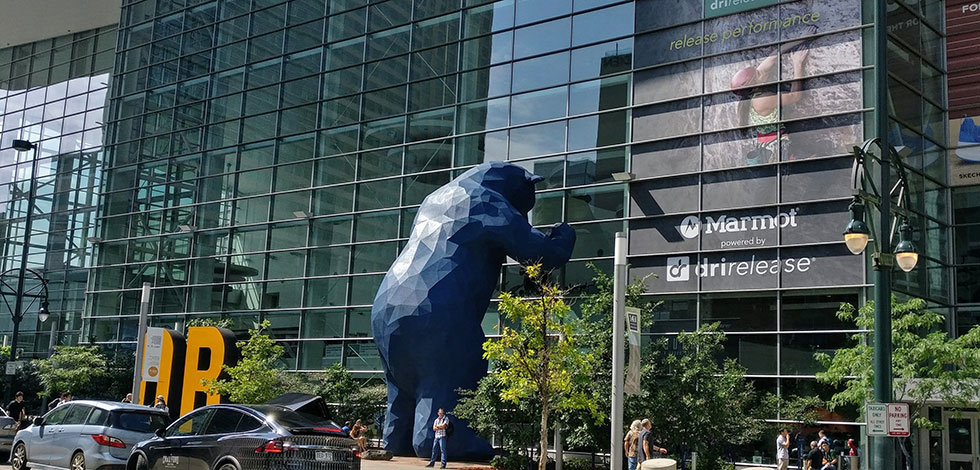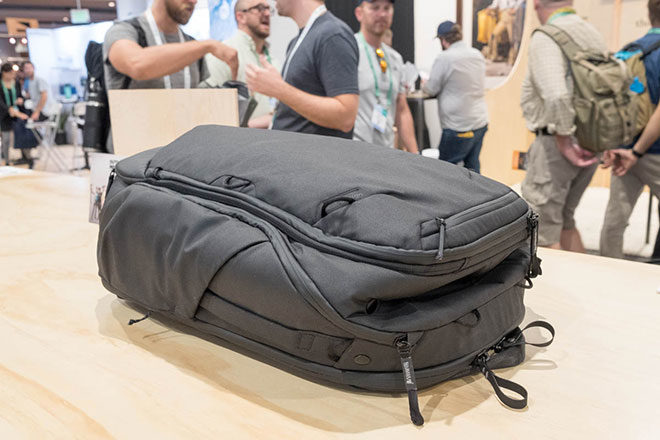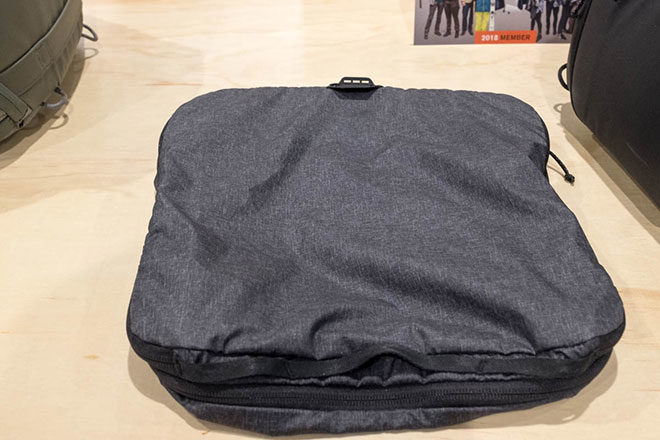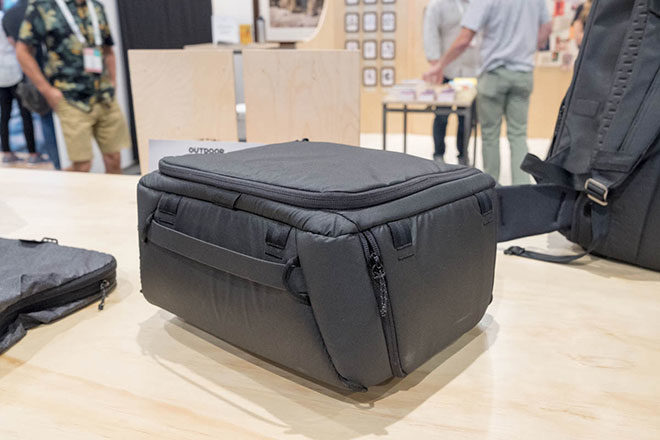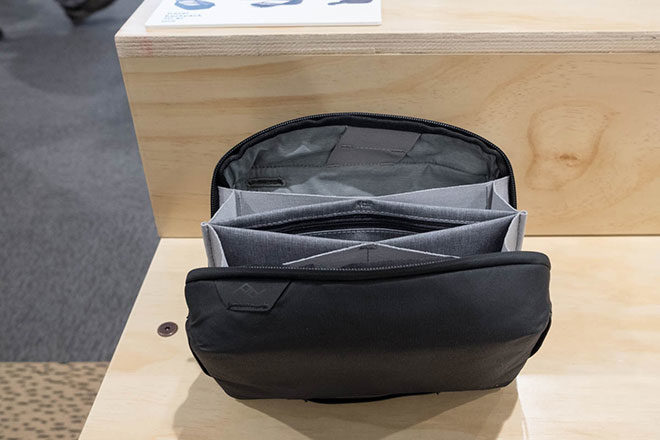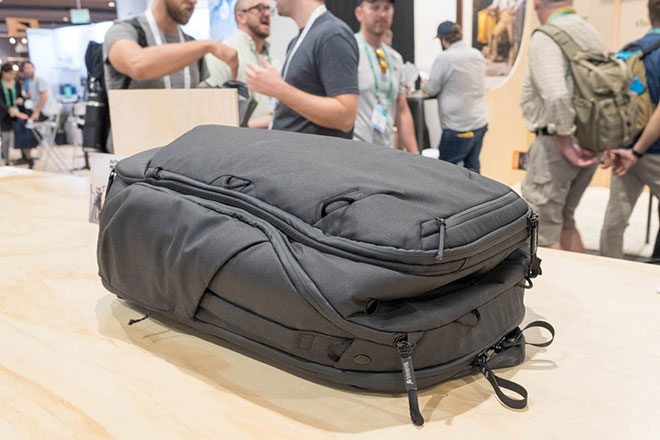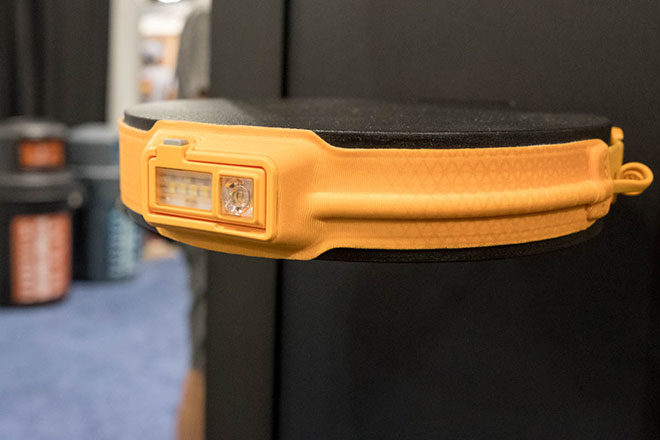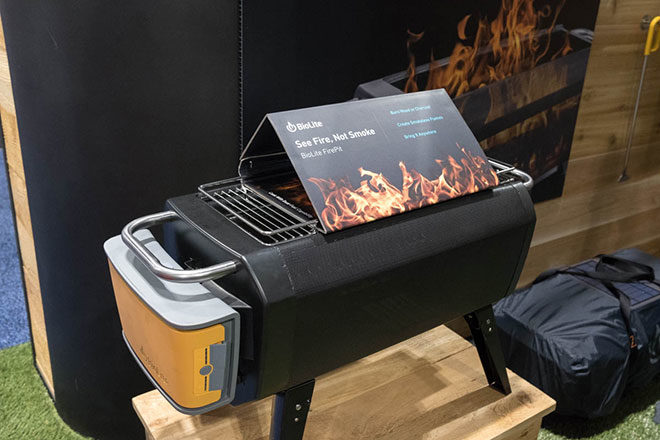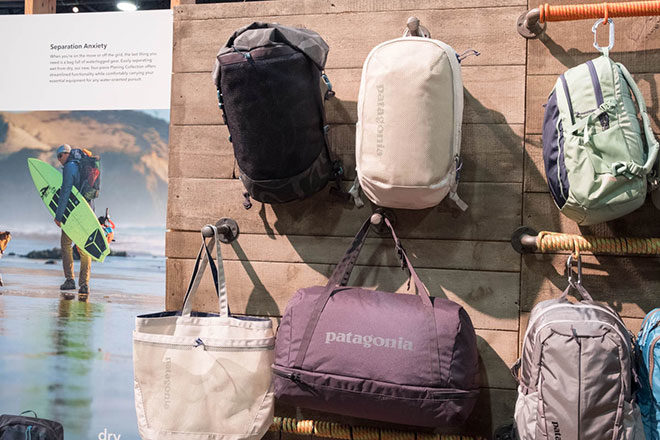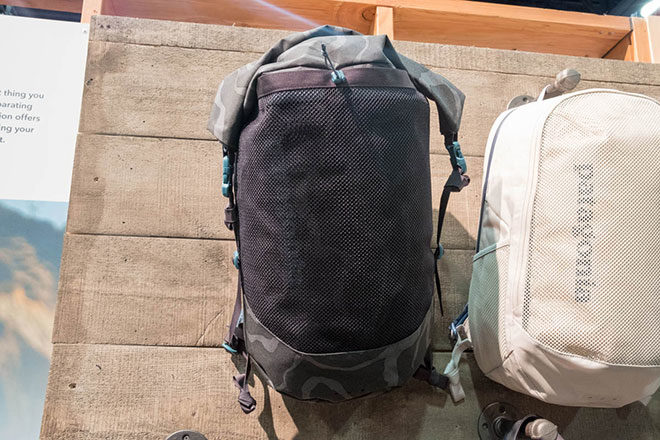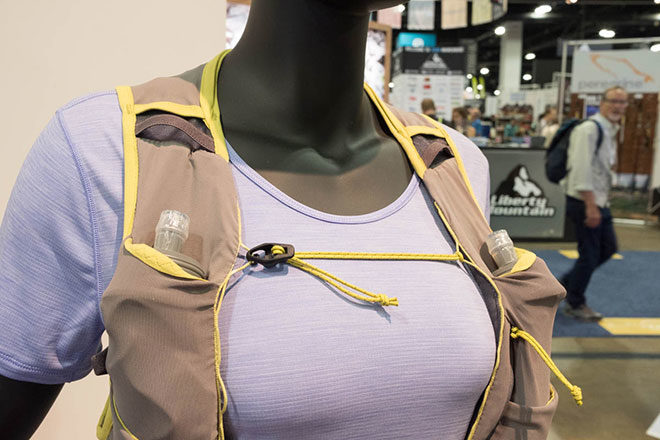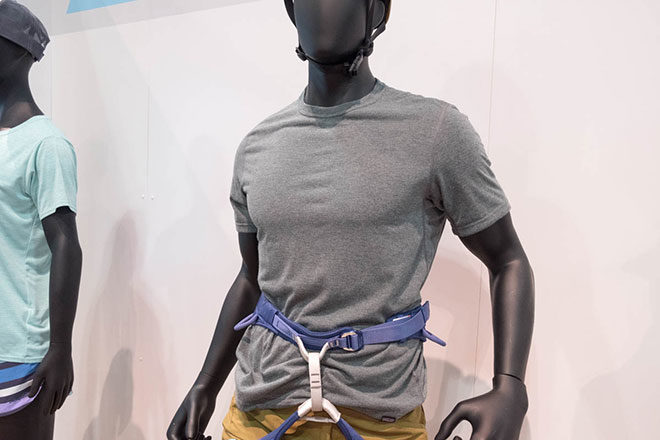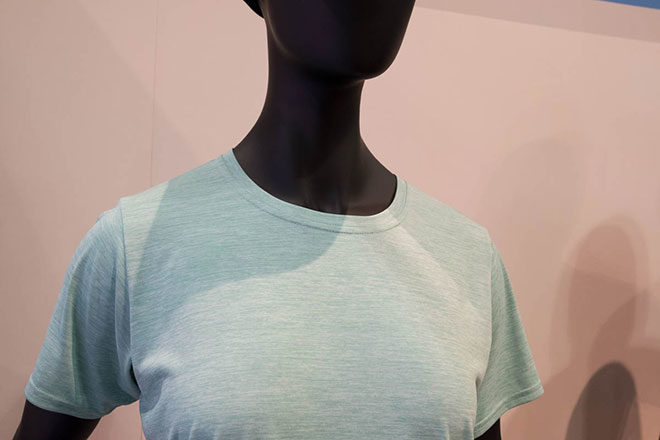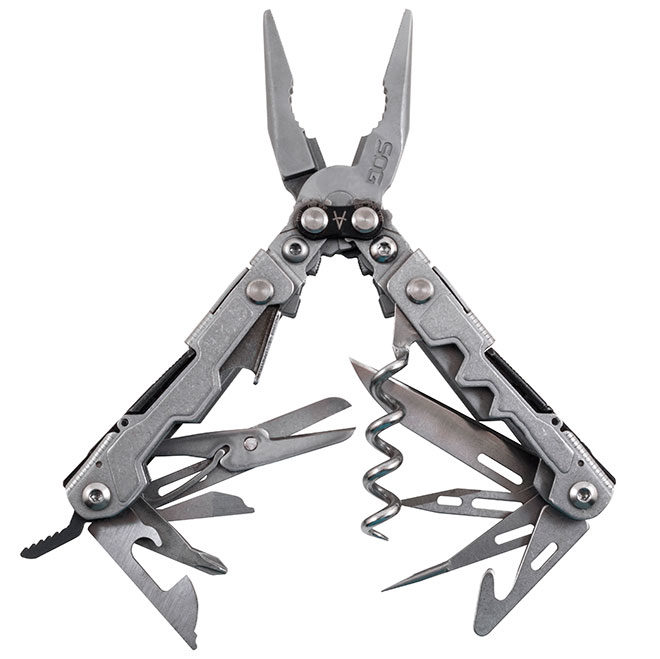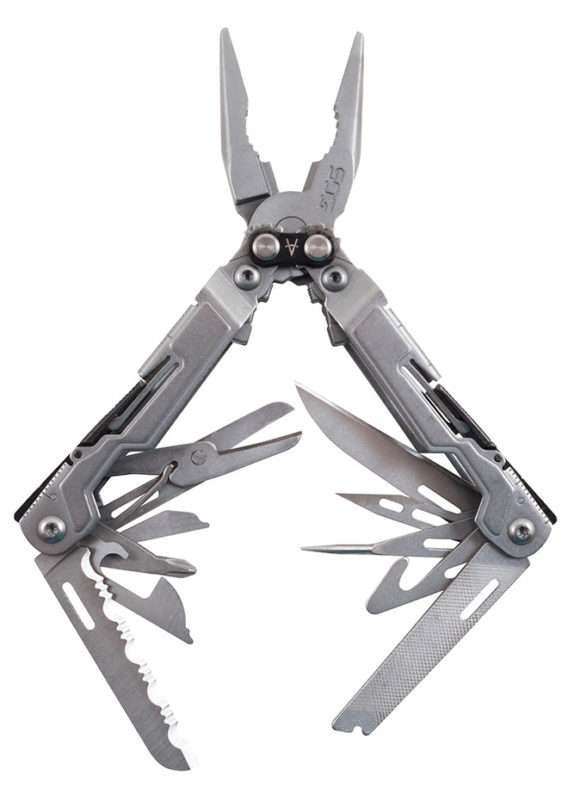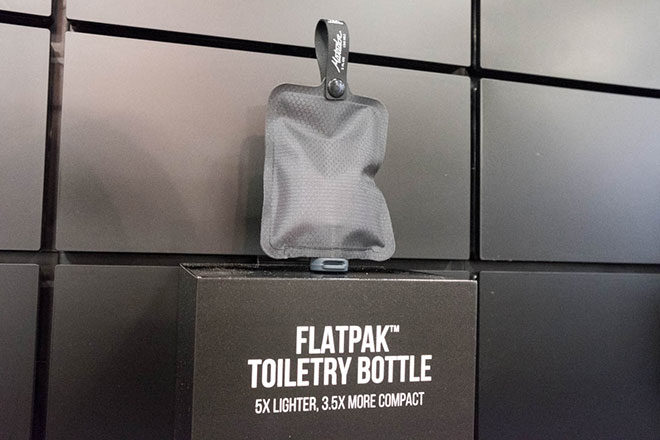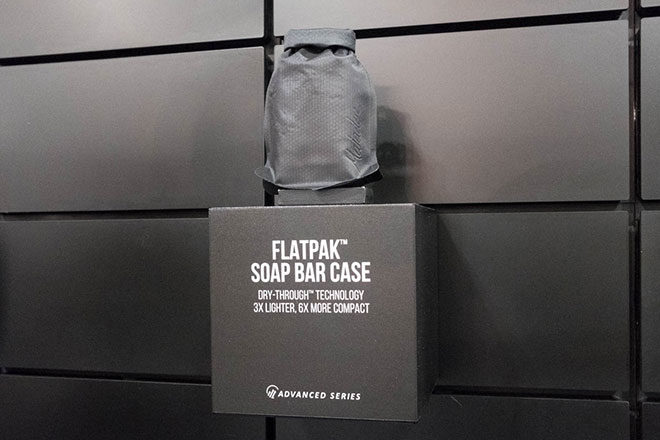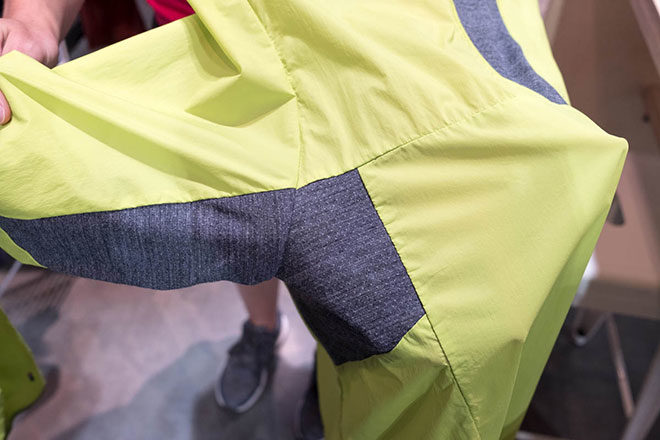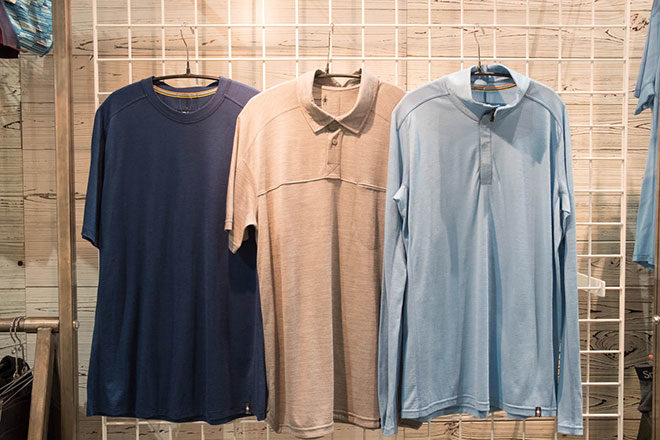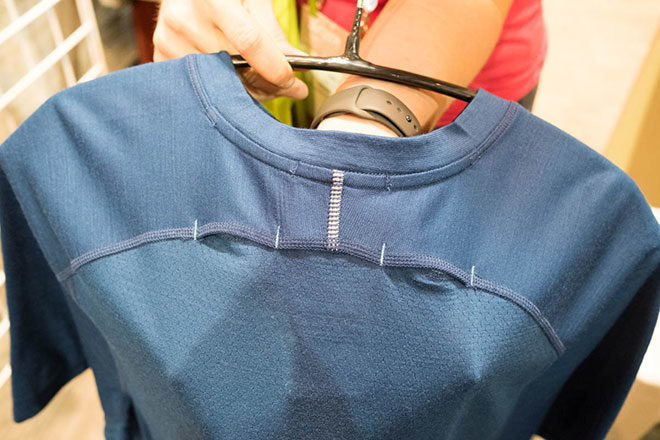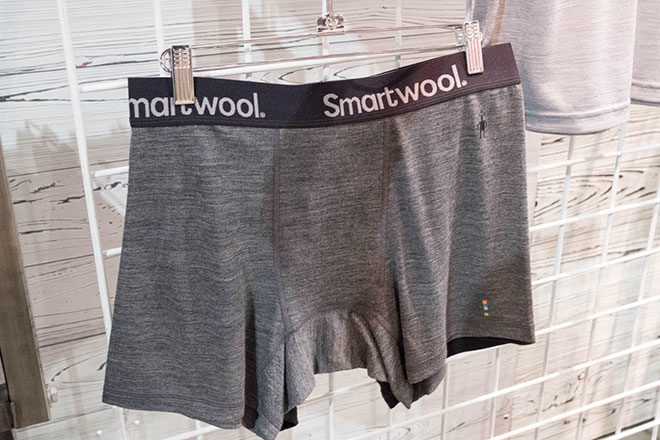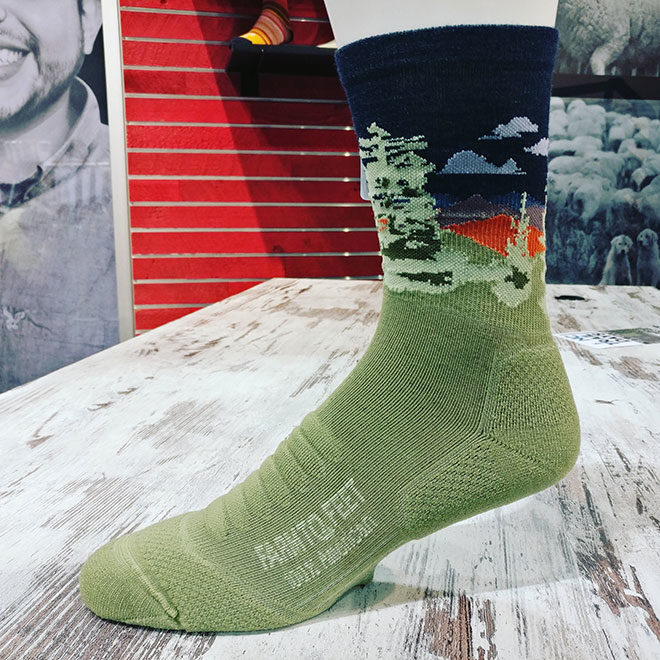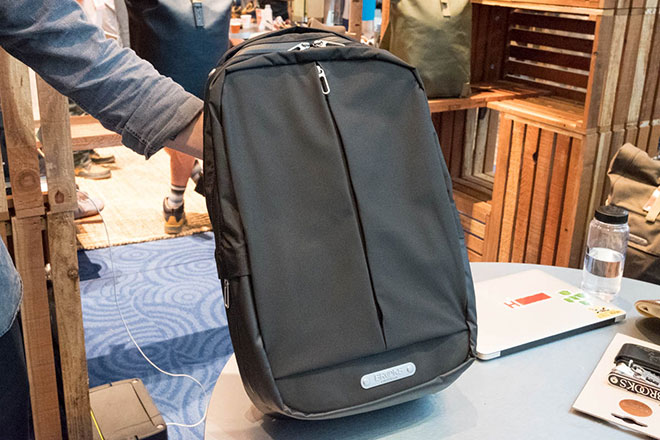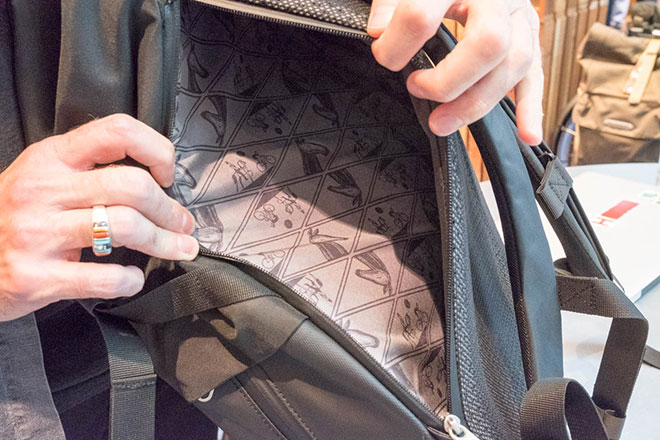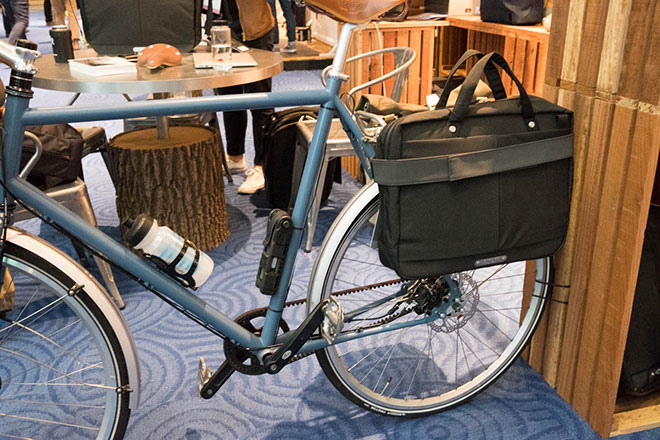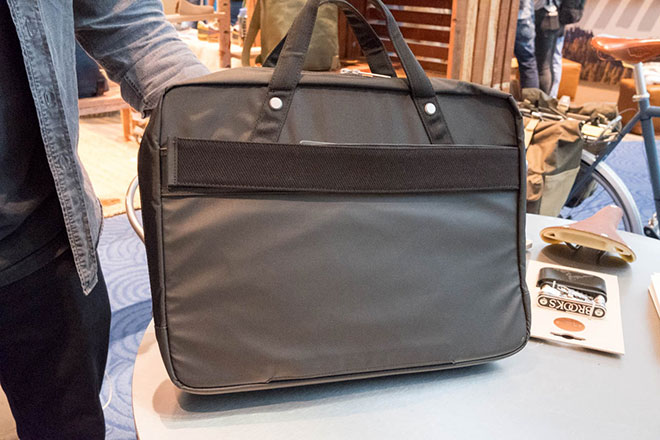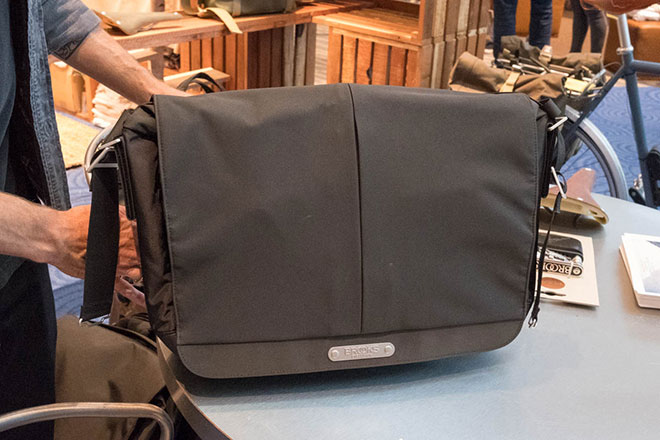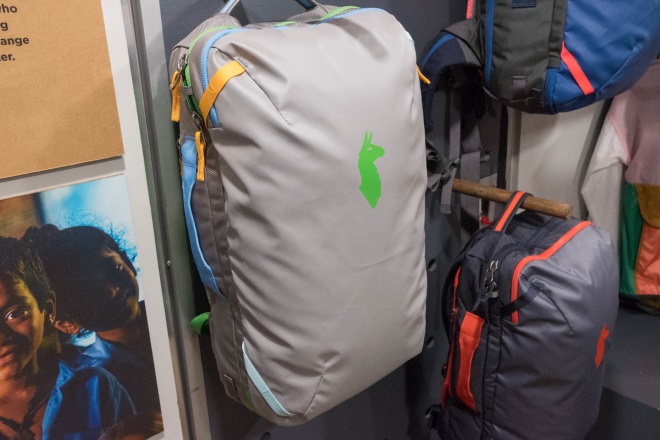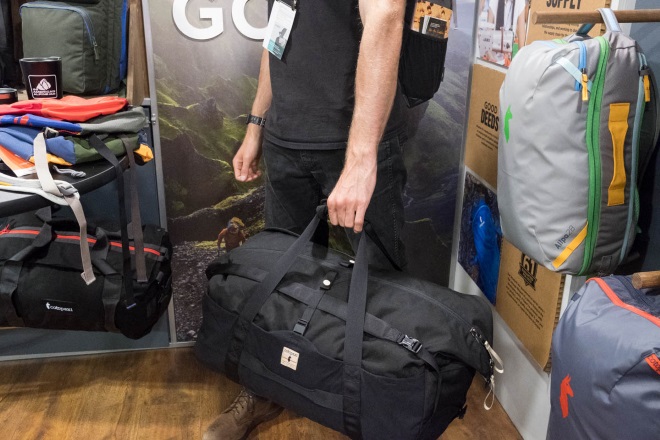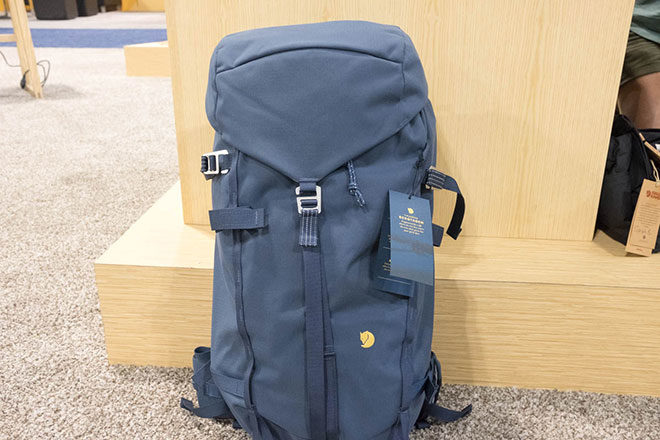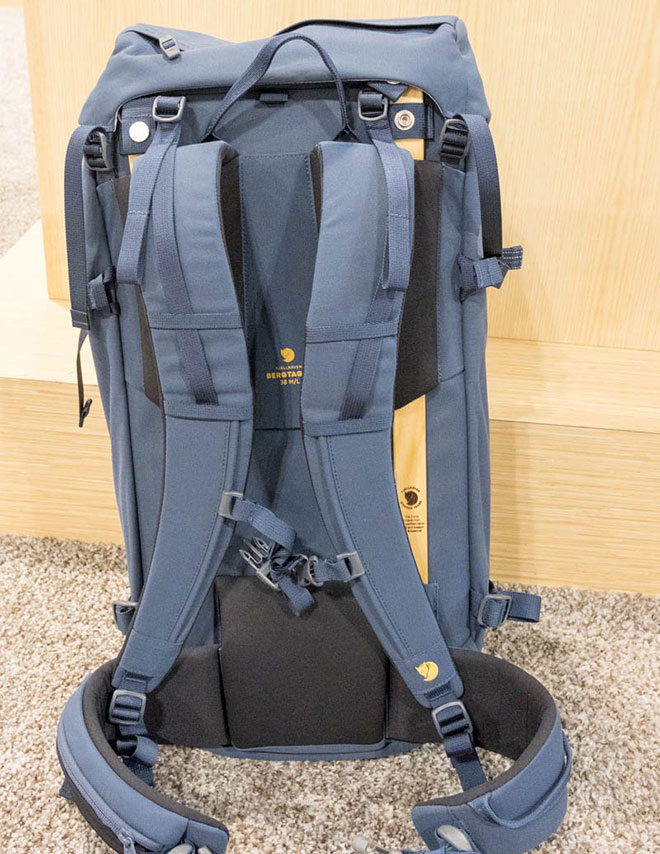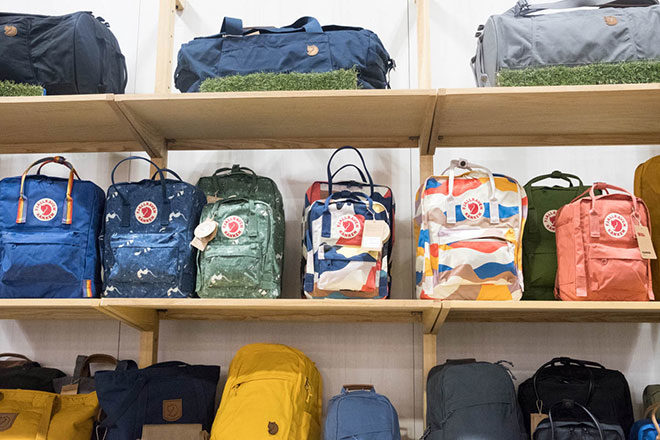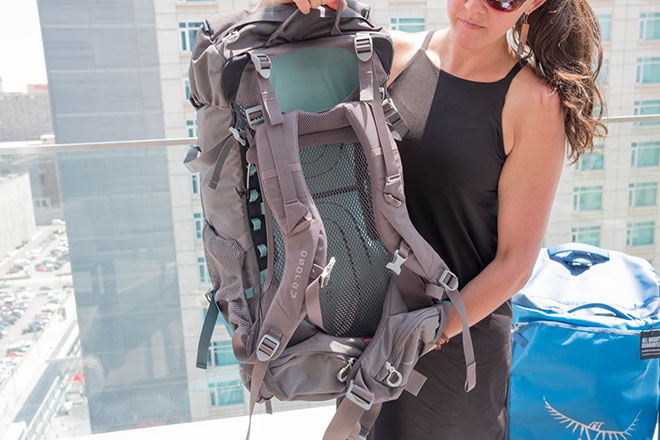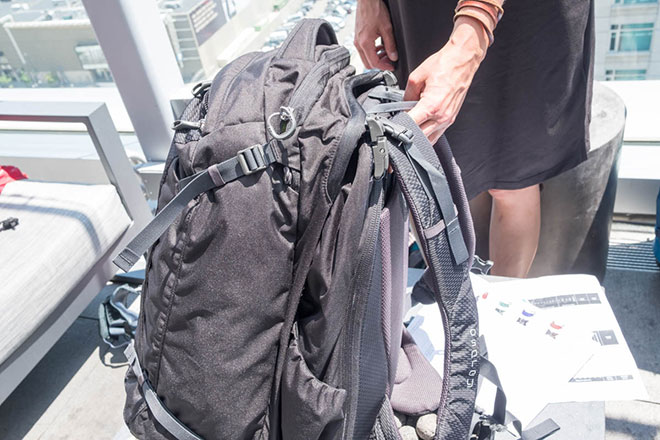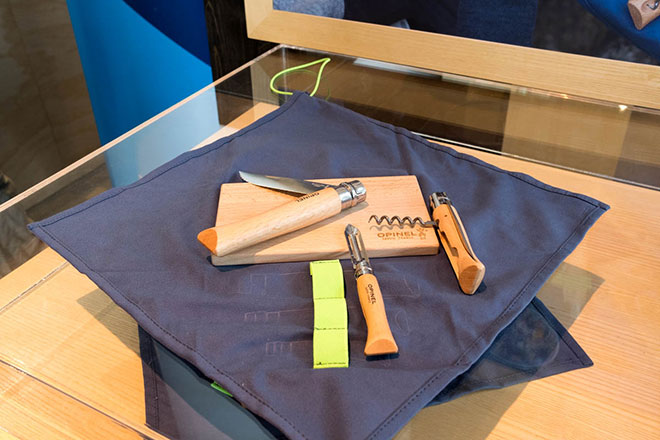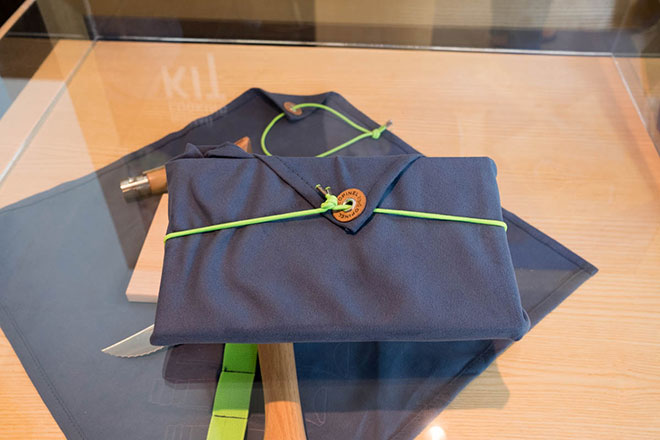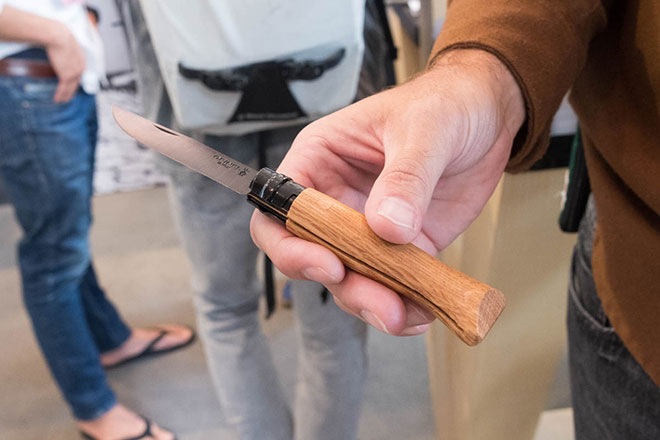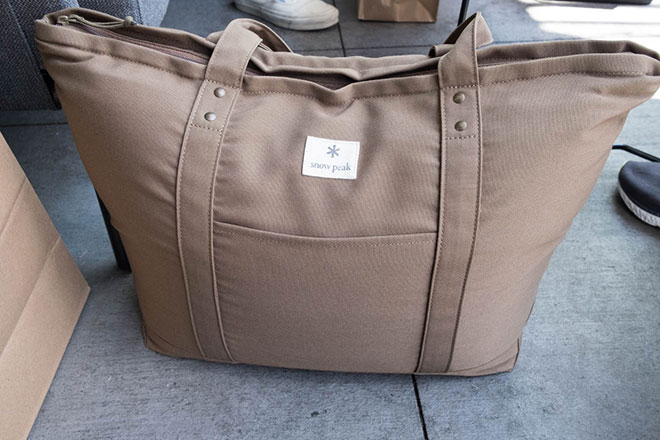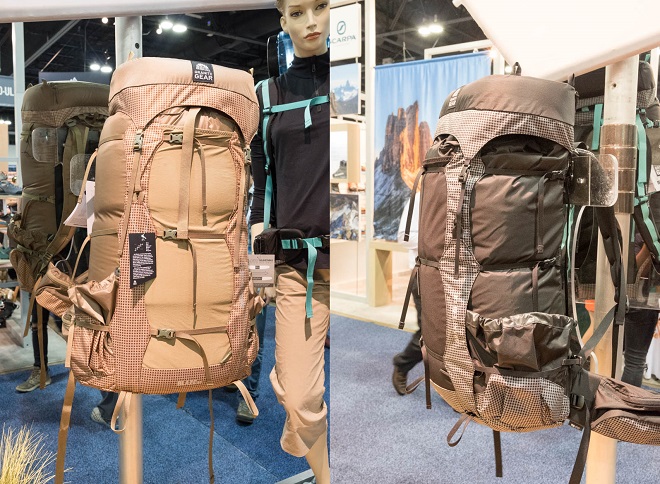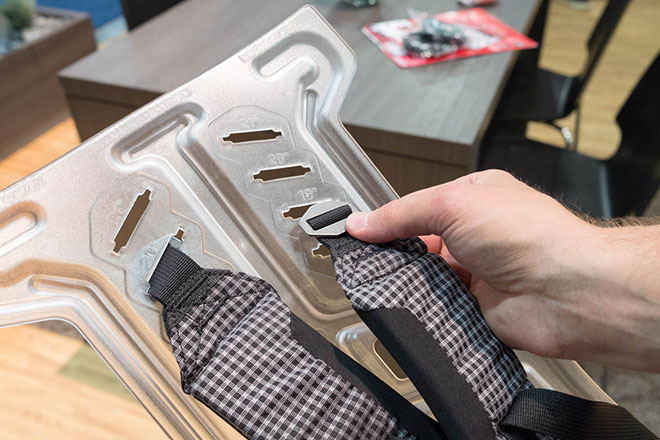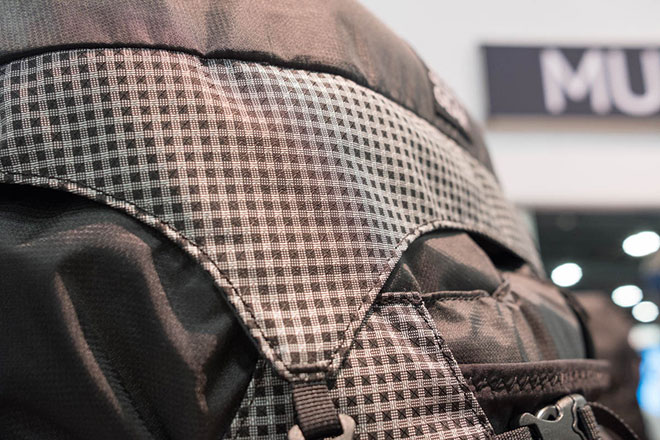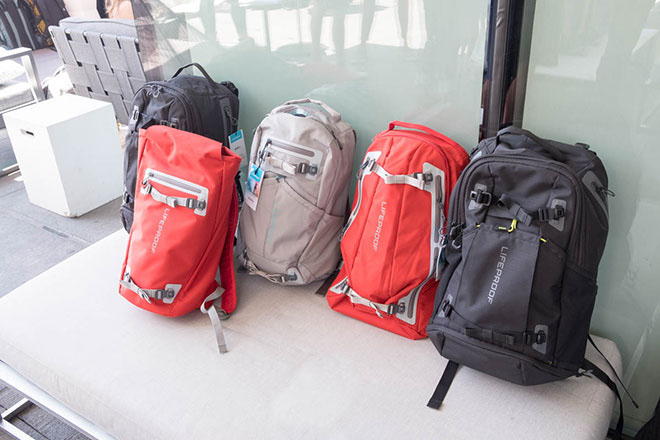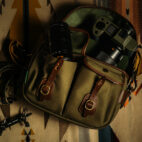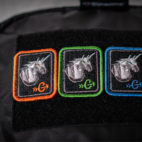Outdoor Retailer Summer Market 2018: Recap Part I
Denver welcomed Outdoor Retailer Summer Market for the first time this year, with open arms, and a new convention center. With the three annual conventions, OR is expected to bring some $110M and 85,000 attendees to the Mile High City, with the Summer Market accounting for roughly half that amount. For many on the Carryology crew, myself included, Denver was a new town to us. We spent the past three years getting to know Salt Lake City and now we had to figure out the layout of a new convention center, the charm of different neighborhoods, and where the best coffee and food was. We were up to the challenge, though, and started first thing Monday morning.
Peak Design
My first appointment at the show was with Peak Design and the timing couldn’t have been better. We met them about 45 minutes before they were going to launch their 8th Kickstarter campaign. I got the full rundown on their new Travel Line and was blown away. The core of the system is, naturally, the 45L Travel Backpack. It opens up with a large bucketed compartment that is designed to be a catch-all for your packing needs. Speaking of packing, they’ve developed a set of camera and packing cubes that are specifically tailored to fit together in the Travel Backpack. The camera cubes come in three sizes so it’s possible to create a combination that fits your needs.
In addition to the camera cubes, there are two sizes of packing cubes (small and medium). They are made of a very lightweight and thin 40D nylon and both expand and compress, plus they have dirty clothes separation. The zippers can even be pulled apart for quick access. Peak has also made a Tech Pouch and Wash Pouch, both utilizing a clever origami opening system. The Tech Pouch is designed so items you drop in can easily be located and accessed, and the accordion shape is designed so bulkier items don’t conflict when closing. The Wash Pouch also opens origami style but has a prominent hanging section in the middle for your toothbrush. It closes magnetically, and has two pull handles to invert the pouch for easy cleaning.
“We met Peak Design about 45 minutes before they were going to launch their 8th Kickstarter campaign. I got the full rundown on their new Travel Line and was blown away.”
During the conference, the campaign hit the goal within the first hour and was at over a million before the show was over. You can get in on the action for $235 for the Travel Backpack, with options adding to the cost.
BioLite
This startup from New York came into Denver hot, ready with two new products. First up is the BioLite HeadLamp which expands on their LED and USB rechargeable lighting solutions. I am not sure why I was surprised when this was announced, considering their history of making lights, but I was super stoked to hear about it and even more excited to see it in person. It features what they call 3D Slimfit Construction, which is comprised of three parts: first the front portion is flush even with the electronics integrated, second there’s better balance that’s achieved by moving power to the rear pack, and lastly, the use of smart fabric (moisture-wicking, minimized abrasion points). The Li-ion battery can power the light for three hours on high (330 lumens) and 40 hours on low (5-7 lumens). In addition to white light, it can also do spot, flood, red, strobe and is infinitely dimmable. And for the final touch – it can be articulated with just one hand. It is coming out Spring 2019 and will be priced at $49.95.
If you don’t want to wait that long and want to try out BioLite’s latest, then make sure to check out their FirePit. The aluminum rectangular box weighs 19 lbs and is designed to allow you to have campfires or cook, all while minimizing smoke. They achieve this by using a proprietary airflow system which injects the fire with oxygen, along 51 jets. This causes your fire to burn hotter, vaporizing the particulates that make up smoke. BioLite designed the sides of the FirePit with a mesh so users can see the flame. They found that many people build fires that are too large because they just want to see the flames. This X-Ray Mesh allows you to see the fire from the sides, which means you can build a fire with as little as four logs. Rounding out the features are the fold-up legs, convenient carry handles, and an optional storage bag with a built-in solar panel for recharging. The BioLite FirePit is priced at $199.
Patagonia
The latest in bags this year for Patagonia is their Planing Collection. These wet/dry bags are made specifically for surfers, kitesurfers, fishermen, and whoever may have the need to separate wet and dry clothing. Many of you may already know that Patagonia makes dry bags, primarily used for fishing. They noticed that surfers were re-purposing these expensive and often overbuilt bags for their needs, creating an inefficiency. To address this, Patagonia is releasing a four-piece collection that allows for wet/dry separation; it comes in at a lower price point, and is focus built for anyone who needs that as the main feature, while not forcing users to pay for features they don’t need. The Planing Collection is available in a rolltop, tote, duffel, and divider pack. It will be available February 2019.
As far as travel and techincal clothing is concerned, Patagonia has taken their Capilene series and simplified it with three shirts, each with a specific purpose. The first is a daily tee that fits like a tshirt. It has a higher neckline and is your go-to, do-everything shirt. It has a 50+ UPF rating to protect you from those rays. Next up is a shirt that is geared more like a synthetic climbing shirt. It’s good for warmer trail runs, climbing, etc. It is integrated with Tencel for its benefits. Finally their most lightweight shirt is for trail running, and high performance activities. It has a wider neckline and is more form-fitting. These new Capilene shirts will be available February 2019.
SOG
I’ve been keeping an eye on SOG ever since I picked up one of their blacked-out PowerAssist full-sized multitools. This year, in addition to some nifty little blades like the Flare with its assisted opening, SOG is introducing two small multitools. First up is the PowerLitre which preserves SOG’s compound leverage mechanism for maximum compression, but does it in a smaller package. It measures 5″ in overall length and has 17 tools including a corkscrew! That’s a first for me on a pliers-style multitool.
Similarly, the PowerPint also is 5″ long, has the same compound leverage mechanism, but pulls off 18 tools in a slightly lighter package (4.2 vs 4.6 oz). The smaller PowerPint comes in at $54 and the PowerLitre is priced at $67 and both are available now.
Matador
I swear, everyone I waxed poetic to about this booth was nodding in enthusiastic agreement. With their FlatPak line, Matador solved a problem that nobody knew they had or at least never thought could be improved. We all travel and know what a hassle it is to pack toothpaste, soap, shampoos, and conditioners, especially given our political climate and strict TSA rules. First up is the FlatPak Toiletry Bottle which comes in a 1 or 3-pack and retails for $12.99 or $34.99, respectively. It’s made with a special Cordura fabric that has never been used with this application before. It is 5 times lighter and 3.5 times more compact than traditional toiletry bottles. The best part is it compresses down to exactly the amount of product you have left, leaving you with more room in your bag as your trip progresses.
Next up is their FlatPak Soap Bar Case which really stole the spotlight. Again, using the Cordura material with a proprietary coating, this time the Soap Bar Case has a breathable membrane (they call Dry-Through) which allows the bar to dry when it’s being stored. The rolltop closure means the case is only as large as the remaining bar. No more gross Ziploc bags or bars of soap wrapped in paper towels. The Soap Bar Case retails for $12.99.
“With their FlatPak line, Matador solved a problem that nobody knew they had or at least never thought could be improved.”
Smartwool
The story this year with Smartwool is their thoughtful construction, especially in regards to their new men’s and women’s tops, where they are really showcasing their 3D mapping technology. Take for instance their updated men’s anorak which is body mapped and mesh paneled. They put merino where it’s needed and made the garment breathable and vented, to minimize billowing during active pursuits.
Their Merino Sport 150 utilizes a merino that is woven around a nylon core, giving you the benefits of both materials. The use of the aforementioned inset mesh panels adds more style, especially to the women’s tops. The highlights here are the women’s tank top and the men’s tech tee, both under the Merino Sport 150 range. Finally, for men, we also see new boxer briefs, with some models removing the front flap opening for those athletes that are looking for a sleeker fit. There is also a new brief available, with less leg material than the boxer.
Farm to Feet
The evening before flying out, we were having dinner at an Indian restaurant and this lady overheard our conversation about coolers. Jokes were exchanged and at one point, showing her frustration with the exhibit selection, she rhetorically asked “Gosh, could there be any more merino sock companies?” I laughed but as someone who is a big proponent of merino (for everything), I am glad there are lots of options for merino socks.
I would have passed by Farm to Feet’s booth if it had not been for a rep who led me to them during a rapid-fire tour of brands. Farm to Feet’s main selling point is they are focused on a Made in the USA merino sock. This means everything from the wool and nylon to packaging, inks, and workers are American. It was launched about five years ago by Nestor Hosiery which is an OEM that produces socks for some big brands you’ve heard of.
What caught my eye is the Cascade Locks hiking sock, named after the gathering at that site, for the Pacific Crest Trail Days. In fact, all of their socks are named after a trail or region in the country. Farm to Feet does not do any printing so all of their designs are knitted into the sock. It’s quite fascinating when you take a close look at the detailed designs. They have also put thought into where to put extra cushioning and where to keep it less cushioned, depending on the task at hand. For the Cascade Locks sock, this means no cushioning in the arch to minimize weight and bulk, but it does have cushioning on the top of the foot for extra comfort. Priced at $22.50 a pair, which is in line with their other offerings, I am definitely looking to Farm to Feet for my next pair of hiking socks.
Brooks England
At first glance, the new Brooks Discovery Range doesn’t seem to really fit with the other bags in their collection. However, once you place them among their wildly successful Cambium saddles, you start seeing the shared DNA. There are a total of five bags in Discovery, but one didn’t make it to the States (a smaller version of one of the backpacks). Let’s focus on the ones that are available now, stateside. First up are the two backpacks – the Sparkhill in 22L and the Pitfield which starts at 24L and goes up to 28L with expansion. You’ll see similar details on these bags, along with the others in the range. They include: zippers that mimic the shape of the saddle rails, interior lining telling the story of Brooks (you’ll see a man and a horse, which is the origin story of the iconic brand), YKK AquaGuard zippers, waterproof PU-coated nylon and Cordura exterior, and reflective details. A unique feature on the Pitfield is the stretch front which allows you to store a helmet (or jackets) inside. If you opt not to use it for a helmet, there’s an attachment point on the exterior you can attach it to. There is also a place to store your U-lock as well as a padded pocket for your smartphone or sunglasses. The bag can also fit over the handles of a typical piece of rolling luggage, which is super convenient when you are going from gate to gate. Both packs are $200.
The New Street briefcase has attachments to turn it into a pannier. I really thought the system was clever, with you opening two wide straps that then swing around to the front and reattach, providing you with a reflective strip. When it is not in use on a bike, the flaps close in the rear, securing everything neatly. It comes with a shoulder strap but can also be carried briefcase-style, by the handles. It is priced at $200.
Lastly, the Strand shoulder bag features the patented Brooks cycling belt for stability. It comes in at 15 liters and carries a 15″ MacBook, can support a U-lock and has some nicely padded compartments with organization. It sells for $180.
Cordura
Cordura is a real beast to cover here so I want to just focus on a few things that I think are important to the carry industry. First and foremost is the realization that people want items that last longer and continue to look good during wear. To that end, they have created Cordura TrueLock Fiber which is a solution-dyed nylon 6,6. The difference between TrueLock and traditional materials is that with TrueLock, the color is embedded in the fiber. This results in long-lasting and consistently colored products. There is also a water savings of 1.87 liters per linear meter of material plus an energy savings that’s enough to make 170 margaritas on a home blender (I know, random fact but it goes to show how much more efficient this process is). This has great applications in the military where they often are faced with different components on a pack wearing differently and thus creating a non-uniform look. However, this is also crossing over to the consumer market where partners want consistency.
Next up, I asked about microplastics shedding off of clothes and into the water supply or atmosphere. Cordura assured me that they are focused on this and have already completed a study. They are partnering with Tencel and will have innovations debuting in early 2019 in that realm.
Cotopaxi
The biggest news for Cotopaxi at this year’s Outdoor Retailer is the pending release of their smaller 28L Allpa travel backpack. The 35L is a crowdfunding success story and now that the bags have been delivered to backers, the SLC company is releasing a smaller version. Personally, I found the smaller size extremely attractive and a much-needed option. We saw a trend of a few companies releasing products that, on second thought, may have been too large for some of their core demographic. To correct for this, they are releasing smaller bags, with mostly the same feature set as the bigger brothers. In this case, the 28L Allpa has the laptop sleeve, stowaway straps, mesh back panel, and the same anti-theft zippers. The differences are a smaller waist belt since it’s expected to hold less weight, and inside you’ll find just one span pocket on the left side, rather than the two on the 35L. It’s expected in two colorways – shark and phantom, and will retail for a very reasonable $160.
“The biggest news for Cotopaxi at this year’s Outdoor Retailer is the pending release of their smaller 28L Allpa travel backpack. Personally, I found the smaller size extremely attractive and a much-needed option.”
Cotopaxi hasn’t done many lifestyle bags recently so for Spring ’19, they are looking to change that. You have the Ostra which is a 30L bag with some cool hardware. It includes a magnetic latch for the main compartment opening, a sleeve to tuck a book or jacket, water bottle sleeve, mesh back panel, and space for both a laptop and tablet. It will retail for $80 when it’s out Spring ’19. They are also coming out with a messenger bag called the Mono which will also feature magnetic straps (starting to see a trend here?), and will hold a 17″ laptop and is compartmentalized for maximum organization in the office. Finally, the behemoth 50L Burro Duffel will feature magnets to secure the straps and unlike their previous duffel offerings, will have more compartments for sorting your goods.
Fjällräven
I am always excited to see what Fjällräven has in store and this year they didn’t disappoint. The main focus of their booth is their new Bergtagen, their first venture into making a dedicated ski-tour/mountaineering pack. It is 38L and is made with their new Bergshell fabric, which is comprised of recycled nylon. It also features two birch stays that make up the frame. While many of Fjällräven’s packs use wooden frames, this particular frame uses sustainable birch and actually gives you weight savings rather than added weight that other species of wood often has. The stays are removable if you decide you don’t need that extra support. The uploading bag has plenty of room, including a pocket for avalanche equipment/beacon. It’s also hydration compatible and the exterior features a latch for securing rope or other mountaineering equipment as well as compression straps to carry skis or poles. It’s a Spring ’19 release and priced at $240.
“I am always excited to see what Fjällräven has in store and this year they didn’t disappoint. The main focus of their booth is their new Bergtagen, their first venture into making a dedicated ski-tour/mountaineering pack.”
Next up are some more whimsical and fun items. The Kånken Art sees a collaboration with two young Swedish artists, Erik Olovsson and Cecilia Heikkilä, who add their flair to the iconic Kånken backpack. Made from durable G-1000 HeavyDuty Eco S, the bags are also part of Fjällräven’s Arctic Fox Initiative, meaning a portion of the sales will be donated to conservation research. These unique bags will be priced at $90 for the regular size and $80 for the Mini.
Finally, with hip packs making a comeback (not sure what I think about this), Fjällräven is introducing the Ulvö Hip Pack. The pack also uses Fjällräven’s Bergshell fabric and comes in medium and large sizes. The smaller measures 2L in capacity while the large is twice as large. Both have internal and external pockets and have a vintage vibe to them. They will retail for $50 and $60, respectively.
Osprey
Osprey’s story at Summer Outdoor Retailer is really around four new packs. First is the new Rook/Ren which offers backpackers a fully-featured pack for an entry-priced $150. It uses Osprey’s new Airspeed suspension and harness for excellent ventilation and a dialed-in fit. It also comes with an integrated raincover, zippered sleeping bag compartment and plenty of organization. It retails for $155 for the 50L and $165 for the 65L version.
They’ve also redesigned their premium mountain biking packs for Spring 2019. The Raptor/Raven now features their new Biostrech Harness which uses a winged harness to wrap around your upper shoulders for a comfortable close fit while there is dynamic movement on the bike. The AirScape back panel allows for ventilation while the Hydraulics LT 2.5L bladder offers flexibility for riding in different positions. A removable toolroll organizer, helmet attachment point, and hydration sleeve with direct access round out the features. This is priced at $140.
Speaking of cycling, the Seral is a 7L lumbar pack designed to keep you hydrated and with tools close by, but without the bulk of a shoulder pack. It features an AirScape lumbar back panel, direct access to the reservoir, compartment with tool organization and a front panel bungee for additional storage. It’s priced at $85.
Last but not least is their new travel solution. The Ozone Duplex is available now and is a travel pack they are adding to their travel line. The idea for this pack is to have your laptop closer to your body with a larger daypack and a removable cargo bag. The cargo bag comes off and acts like traditional luggage. It has internal compression, internal mesh pockets, a liquids pouch, and duffel style pouch. The idea is you travel to the airport with the two bags attached. Once you get there, you separate the two items and either check in the cargo bag or put it in the overhead bin, while the backpack acts as your daypack. The same goes for when you arrive at your destination – leave the cargo bag at the hotel or hostel, and take the daypack around town. The daypack opens from the back panel for easy access to your laptop. It has a secret pocket for documents like your passport and a water bottle pocket that is still accessible when attached to the cargo bag. It’s available in 65L for men and 60L for women. Available now, first from REI.
“The Ozone Duplex is available now and is a travel pack they are adding to their travel line. The idea for this pack is to have your laptop closer to your body with a larger daypack and a removable cargo bag.”
Opinel
Two new products that Opinel is introducing are their picnic set and a modern take on a classic. First up is a nice little picnic or garden set that includes three tools – corkscrew, No. 12 serated knife (perfect for cutting bread, pineapples, or other hard-to-slice items), and the first over folding peeler. Each tool sits in a designated area, marked by an etching in the cloth, and secured with a loop. Above it sits a cutting board that is made in Italy, using Beechwood sourced from Europe. Everything is wrapped nicely in a bundle with a fiber cloth and secured with an elastic shock cord. This is expected for an end-of-summer release, and will retail for $85.
Next up is the No. 8 Black Oak which takes the 128-year-old classic No. 8 and adds a black oak handle and black annodizing on the blade and locking mechanism. I have always toyed with getting a No. 8 for beach or picnic outings and this Black Oak version was a real stunner in person. It’s $45 and available now.
Snow Peak
The Japanese heritage outdoors company had a team of representatives from their Portland HQ at the show. While they had a handful of cool titanium camping goods available, we were mostly there for the bags. They had a really simple, but impressive, soft cooler tote with them. The rugged canvas bag holds 4.2 gallons and while they recommend using it with ice packs, they had it full with cubes and beer at the show and there was no sign of leakage anywhere. In a world of fairly ugly coolers, I think Snow Peak has a winner on their hands here. It’s available Summer 2018 for $100.
Granite Gear
Like the Crown2 release from last year’s Outdoor Retailer, the Minnesota-based Granite Gear went back to the drawing board and took an existing classic and completely revamped it. This time around, they focused on the Blaze 60 and completely redesigned it. In comparison to the Crown where you can still purchase the Crown 1, this is a new bag, built from the ground up, but with the heritage and foundation of the previous Blaze 60. So what’s new? Where do we start?
First and foremost, there is a higher load rating, 50 lbs, up from the 40 lbs of the last Blaze, and higher than the 30 lbs of the Crown2. They accomplished this in a few key ways. First, there is a non-removable polycarbonate frame sheet that is injection molded instead of compression molded (Crown2). This allows them to vary thicknesses based on the known stress and load points. The new Blaze 2 also has quick-adjusting torso size but utilizing metal buckles that fit into slots in the frame sheet. The sheet is clear so you can easily see what you’re doing as you make adjustments. To ensure a good fit, the Blaze 60 has adjustable hip stabilizers that work by first undoing heavy-duty Velcro straps, pulling the compression straps close to you, then re-securing the straps on the hip belt. Once this adjustment is made, the bag moves with your body.
To maintain essentially the same weight as last year’s Blaze, Granite Gear developed a proprietary and exclusive material (that is similar to Dyneema), that they’re calling Ultra High Molecular Weight Polyethylene (UHMWPE). Traditionally, ripstop fabrics have a fiber content of 7% (one vertical crossing one horizontal fiber). In the Blaze 60, they’ve worked with the mill to up that content to 21%, meaning three vertical crossing three horizontal fibers. This creates a denser ripstop pattern and this material is used in high-stress areas. The rest of the pack is covered in 100D fabric. Other features include a removable top lid that can be attached to the hip belt for waist carry, or on the chest for easy access to maps and snacks, taking the weight off the shoulders.
The Blaze 60 is a Spring ’19 release and comes in two colorways (black and pottery clay) in the unisex, along with three torso sizes. And for women, it comes in black and teal and two torso sizes. It will retail for $269. The Blaze 60 looks to be a very versatile offering from Granite Gear, targeting hikers who want more flexibility in dialing in a fit, and who may need the higher load rating.
LifeProof
The brand known for their protective phone cases have come out with a complete line of bags. Four styles – Quito (18L), Squamish (20L), Goa (22L), and Squamish XL (32L), in three colorways, are retailing for $100 to $180 and are available now. The Quito is considered a flash pack – something you can just pick up and toss some items in and run out the door. The next size up is the Squamish and it has side access, a 13″ laptop compartment, and external storage to support cycling shoes, a jacket or helmet. The Goa has four different tech pockets, side access for a 15″ laptop, and fleece-lined pocket for a smartphone or sunglasses. Finally, the Squamish XL is the king of the collection and comes in at 32L. It has a zip area at the bottom of the pack for wet/dry separation. All packs have a Cordura exterior for water resistance.
Well that wraps up Part I of our OR Summer Market 2018 coverage. Keep your eyes peeled for Part II plus our awards post so you can get the complete picture. If you have any questions, feel free to ask down below. There are a few other brands that we met with briefly, or unofficially, that I didn’t get to touch on here. If you are wondering about a brand, you can check if we came by them, by asking in the comments.





 Carry Awards
Carry Awards Insights
Insights Liking
Liking Projects
Projects Interviews
Interviews
